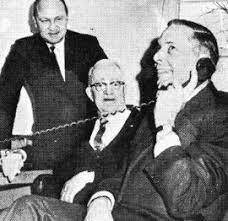How do the Titantic, 911, and Camden Maine connect? Well, read on!
109 years ago today, April 14, 1912, the RMS Titantic struck an iceberg at approximately 23:40. Shortly afterwards, the radio operator on the Titantic sent out SOS messages, but the closest ship, the SS Californian's radio operator was off duty and did not hear the distress call. We all know what happened. As a result of this, the US Congress implemented the Radio Act of 1912, which required all seagoing vessels to have a licensed radio operator on duty at all times to continuously monitor all distress frequencies. This was the first legislation requiring, and governing, emergency communications.
Recognizing that, because of this, it was sometimes easier to request emergency aid on the ocean, compared to your neighborhood, 55 years later, in 1967, President Lyndon Johnson's Commission on Law Enforcement and Administration of Justice recommended that people have the ability to contact public safety with a single number. On January 12, 1968, AT&T announced reserving the number 911 for this purpose. Beginning in smaller communities, engineers began exploring and installing the configuration for a 911 system. On February 16, 1968, Senator Rankin Fite made the first 911 call in Haleyville, Alabama (with a rather unremarkable "Hello?" as the first words to Congressman Tom Bevill on the other end of the line).
So how does Camden, Maine fit in? Well, shortly after that first 911 call, in 1968, Camden became the first community in Maine (and 2nd in the United States - Nome, Alaska was the first) to establish a 911 system.
So, in a manner of speaking, because of a failed distress signal from the Titantic, a 911 system was born in Camden.
Have you thanked a dispatcher today? It's National Public Safety Telecommunicator Week. You should thank one. Or several.
